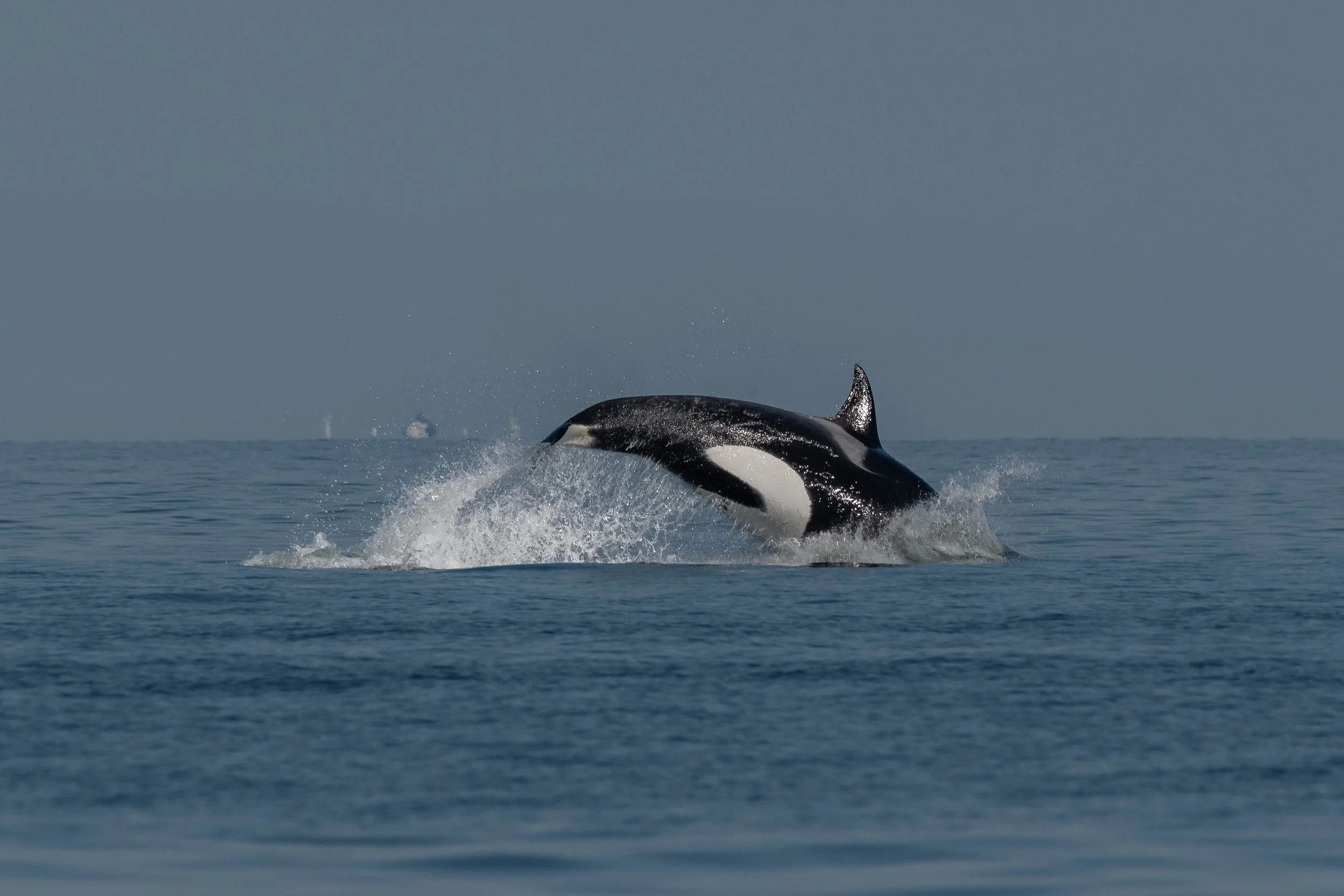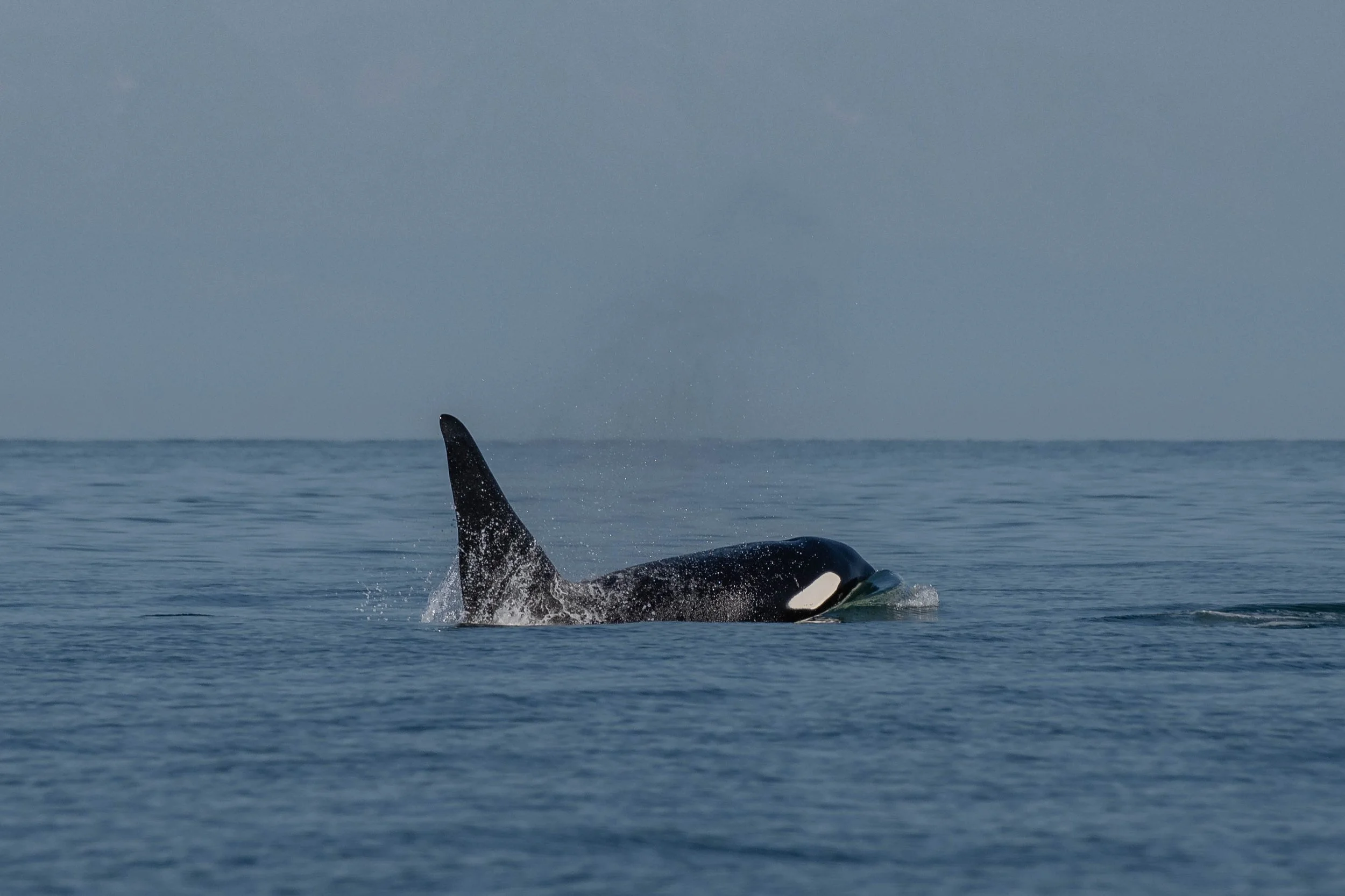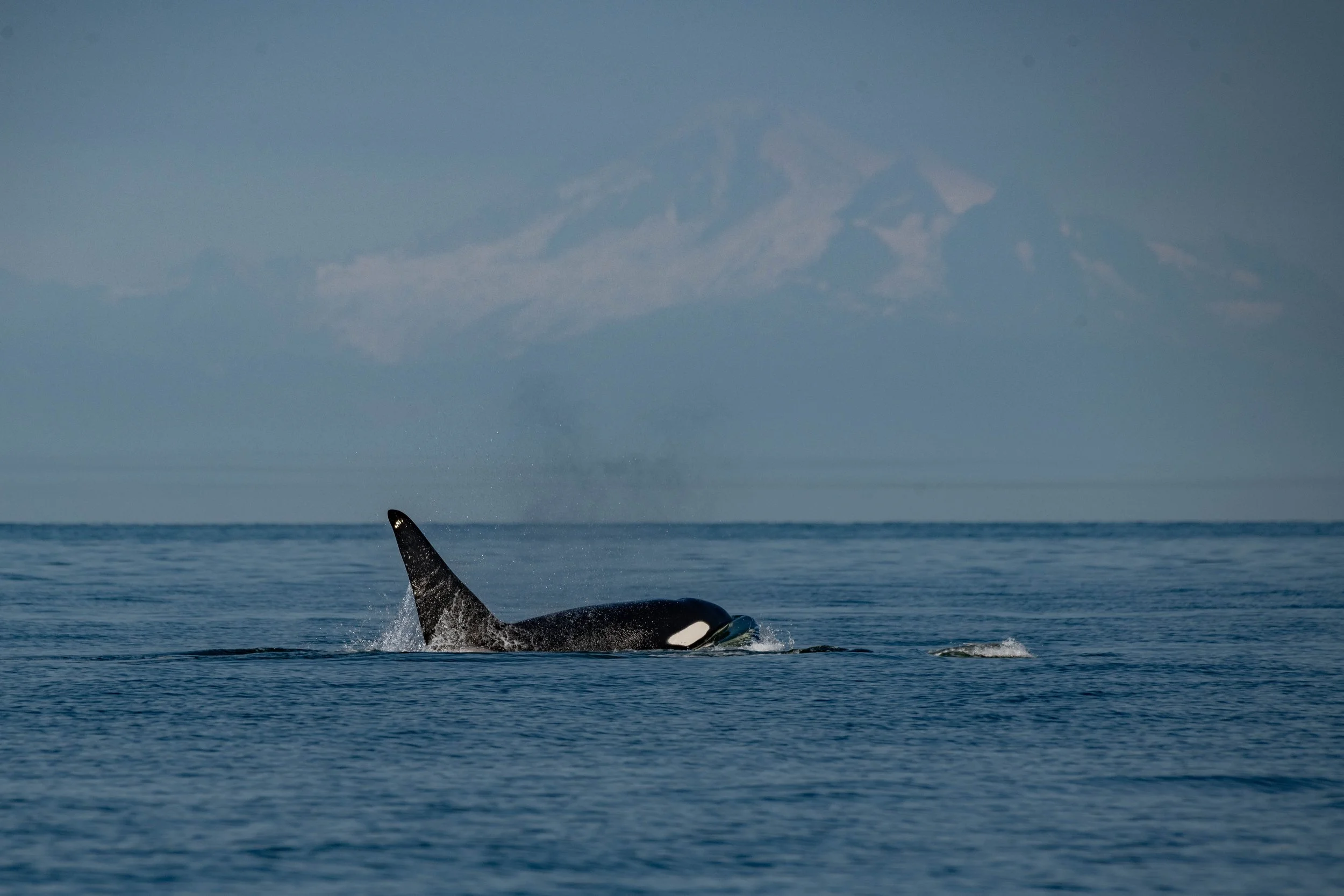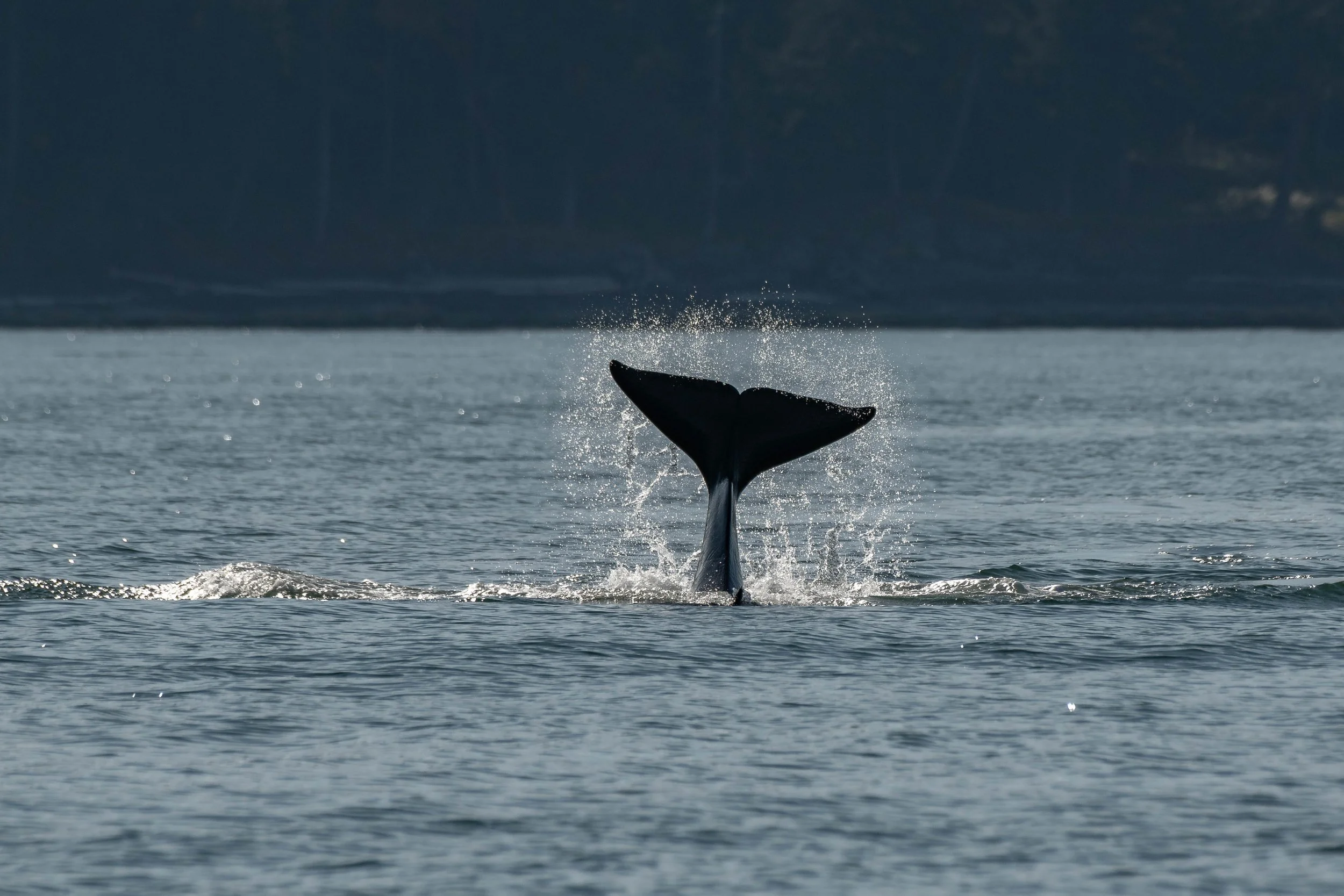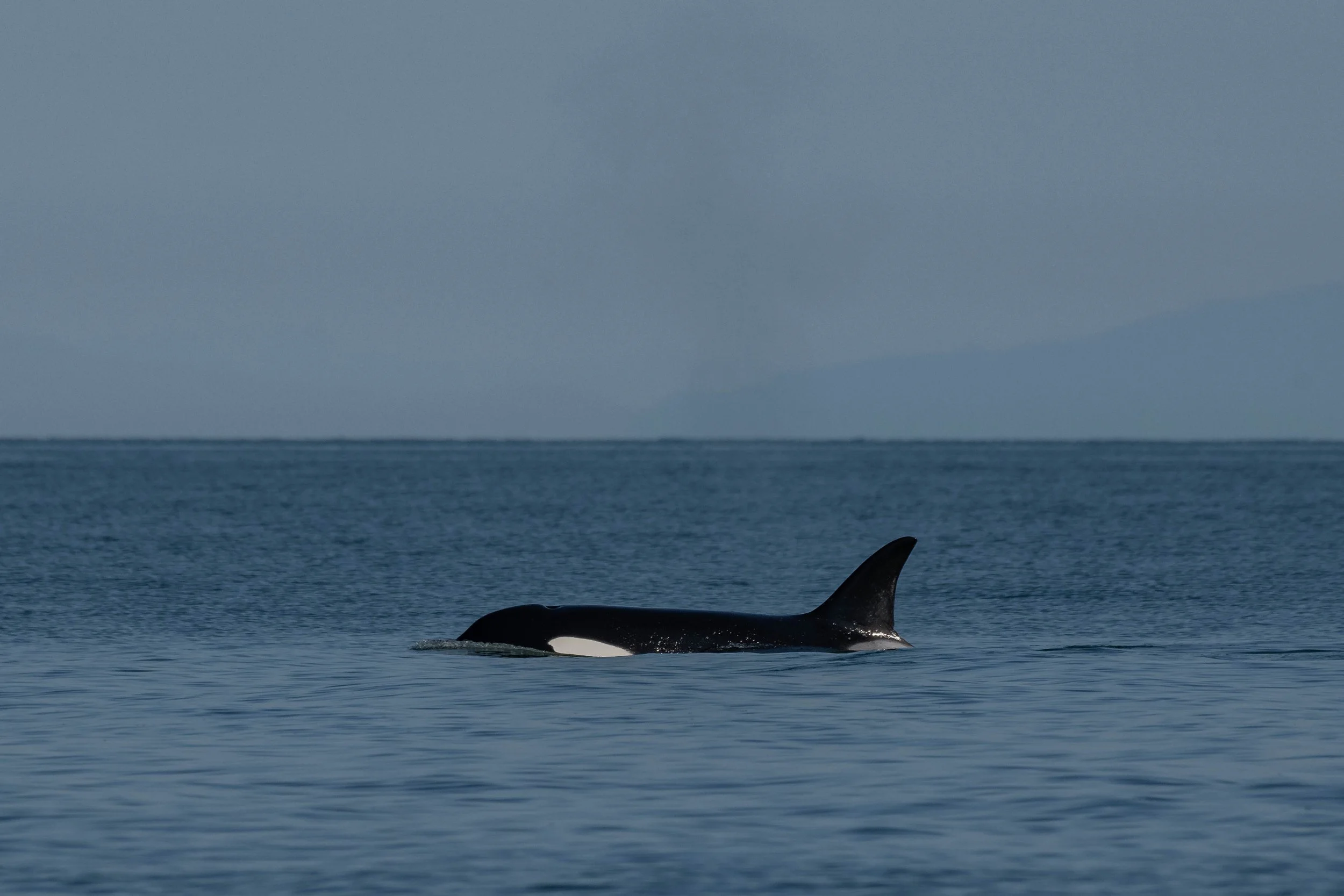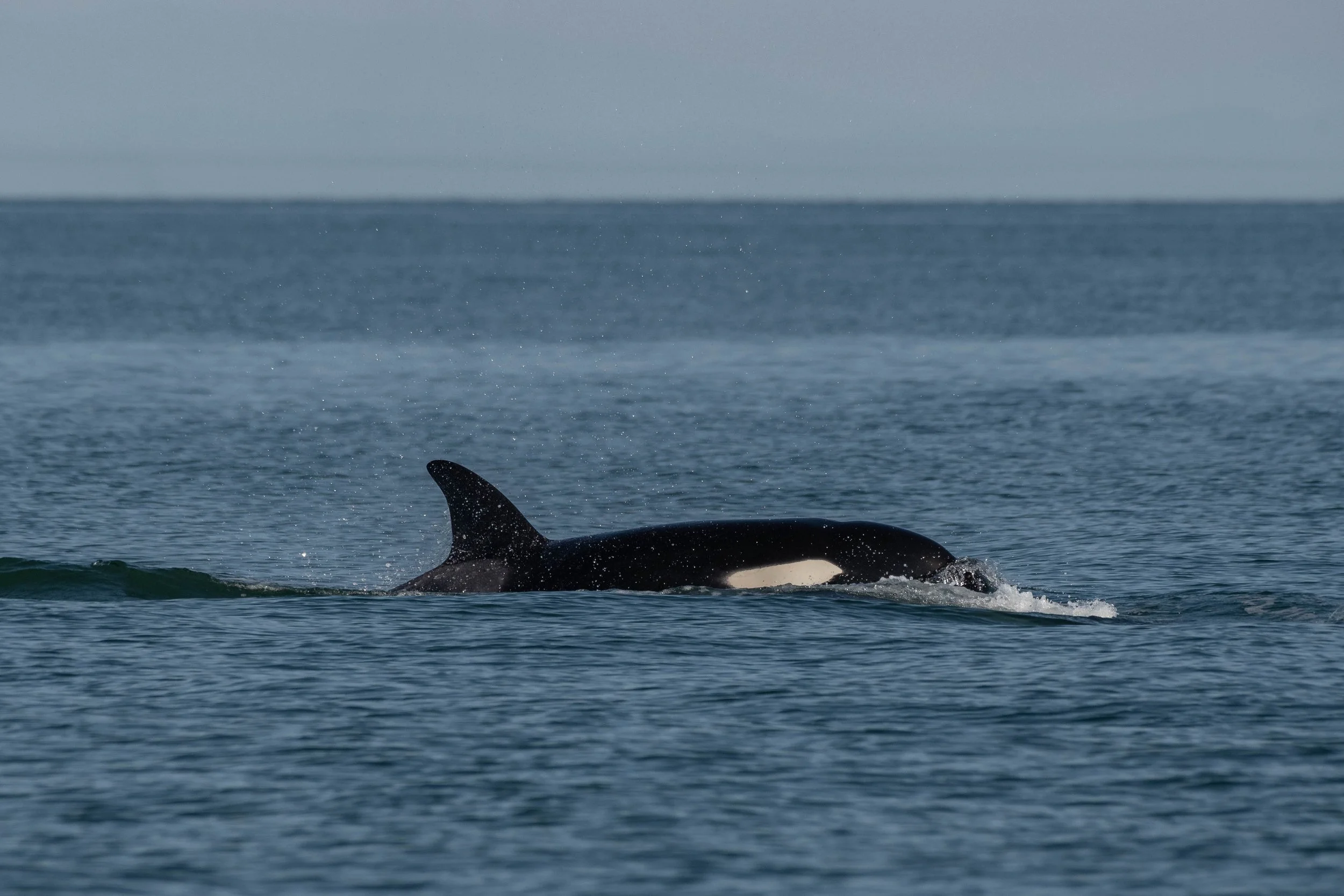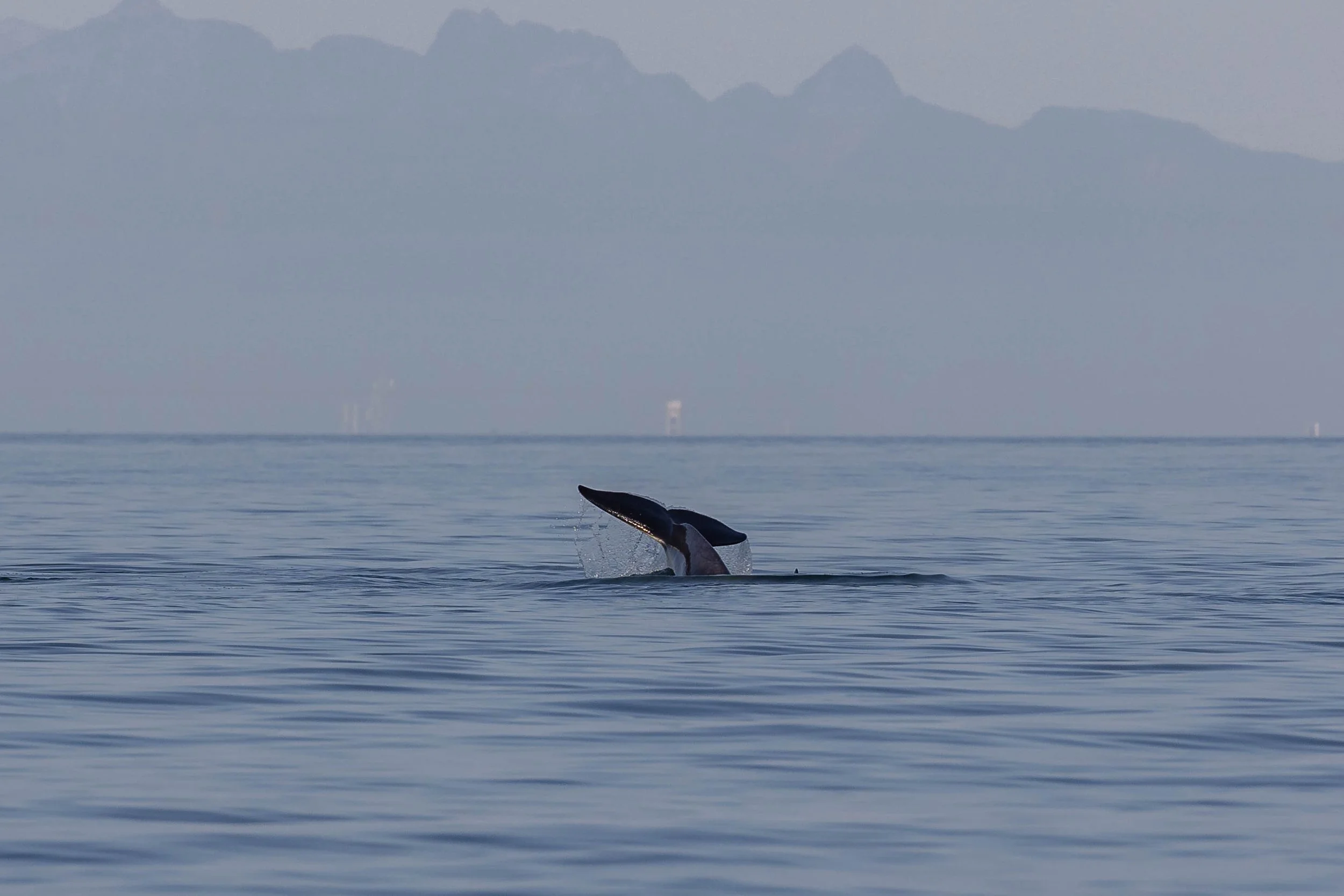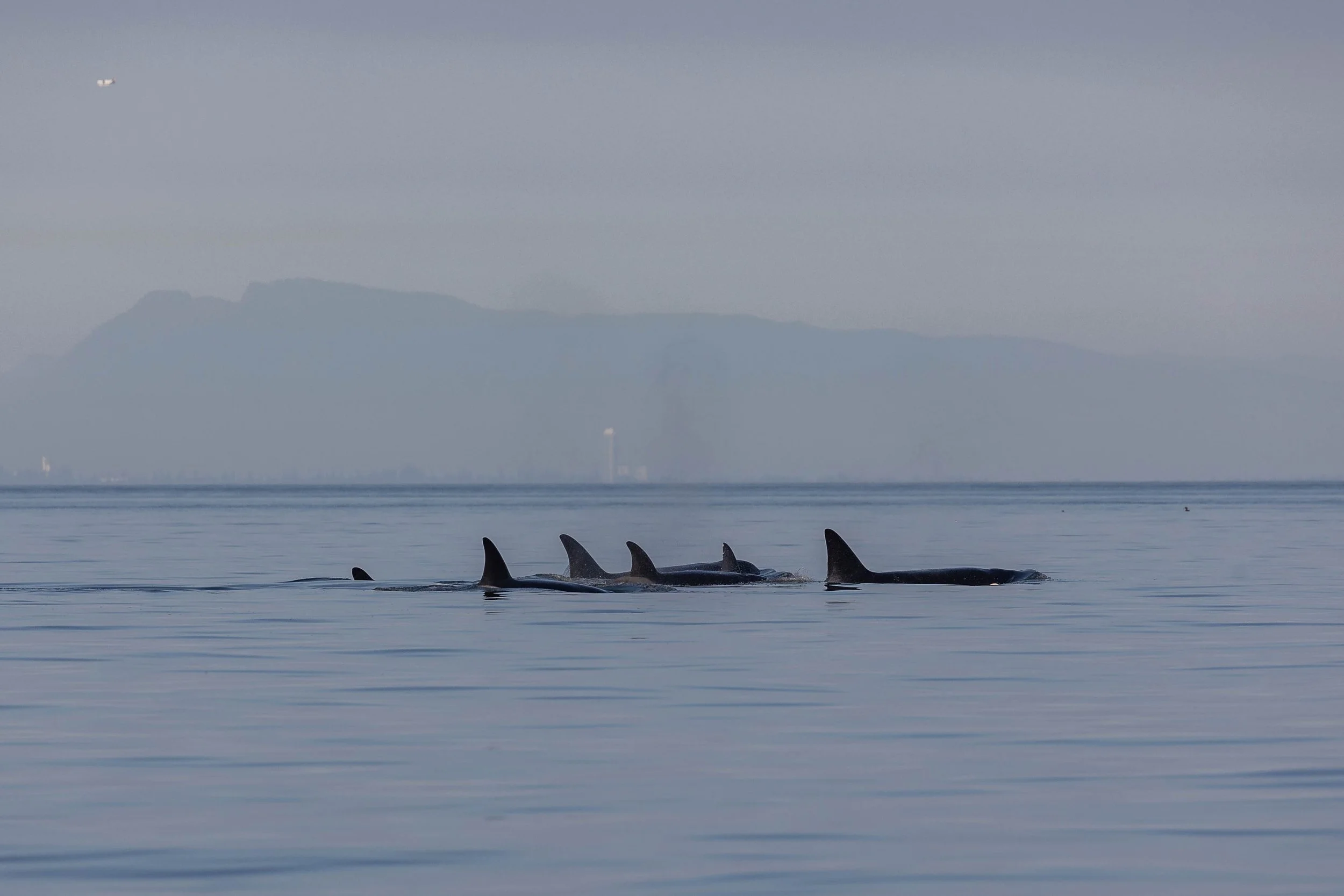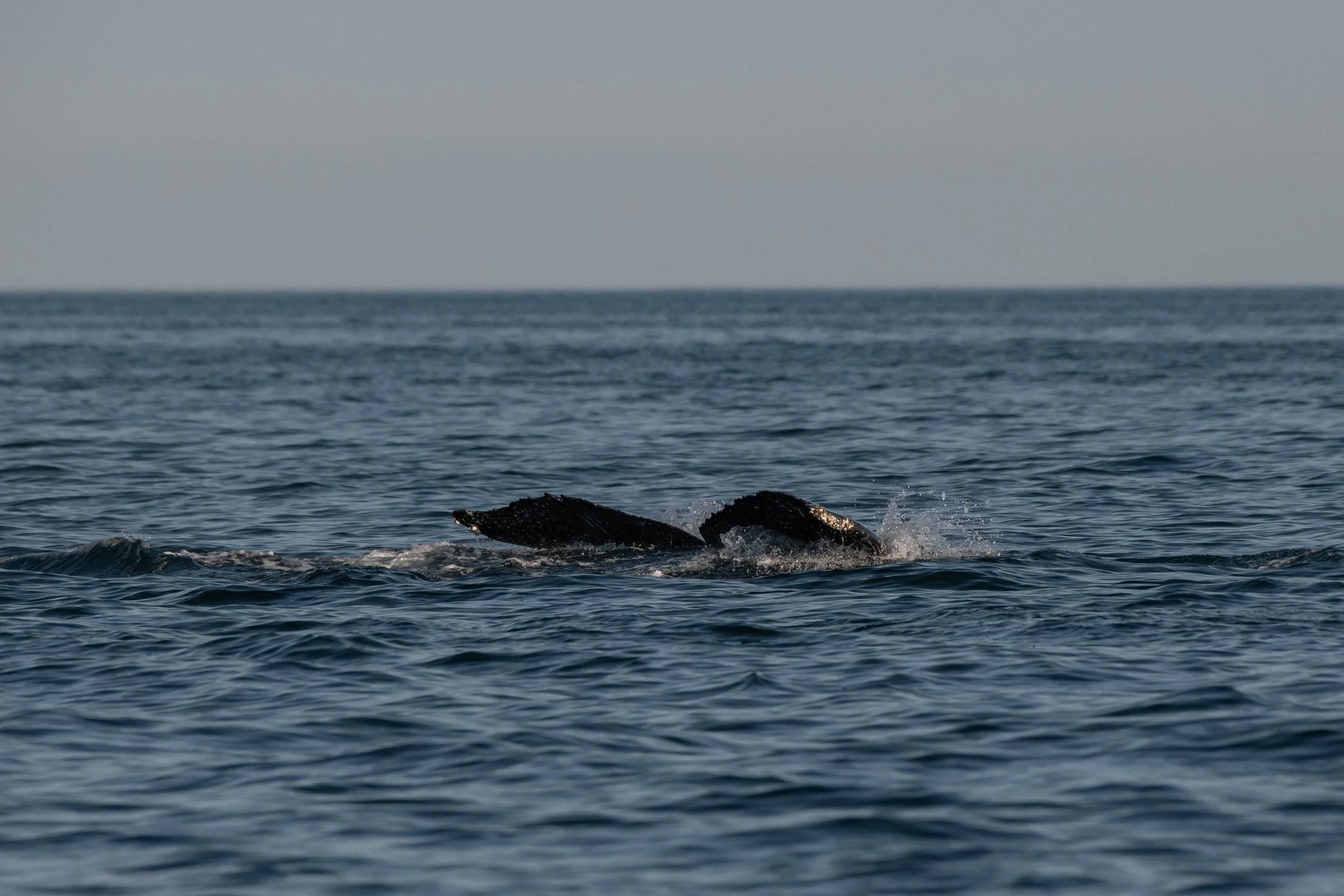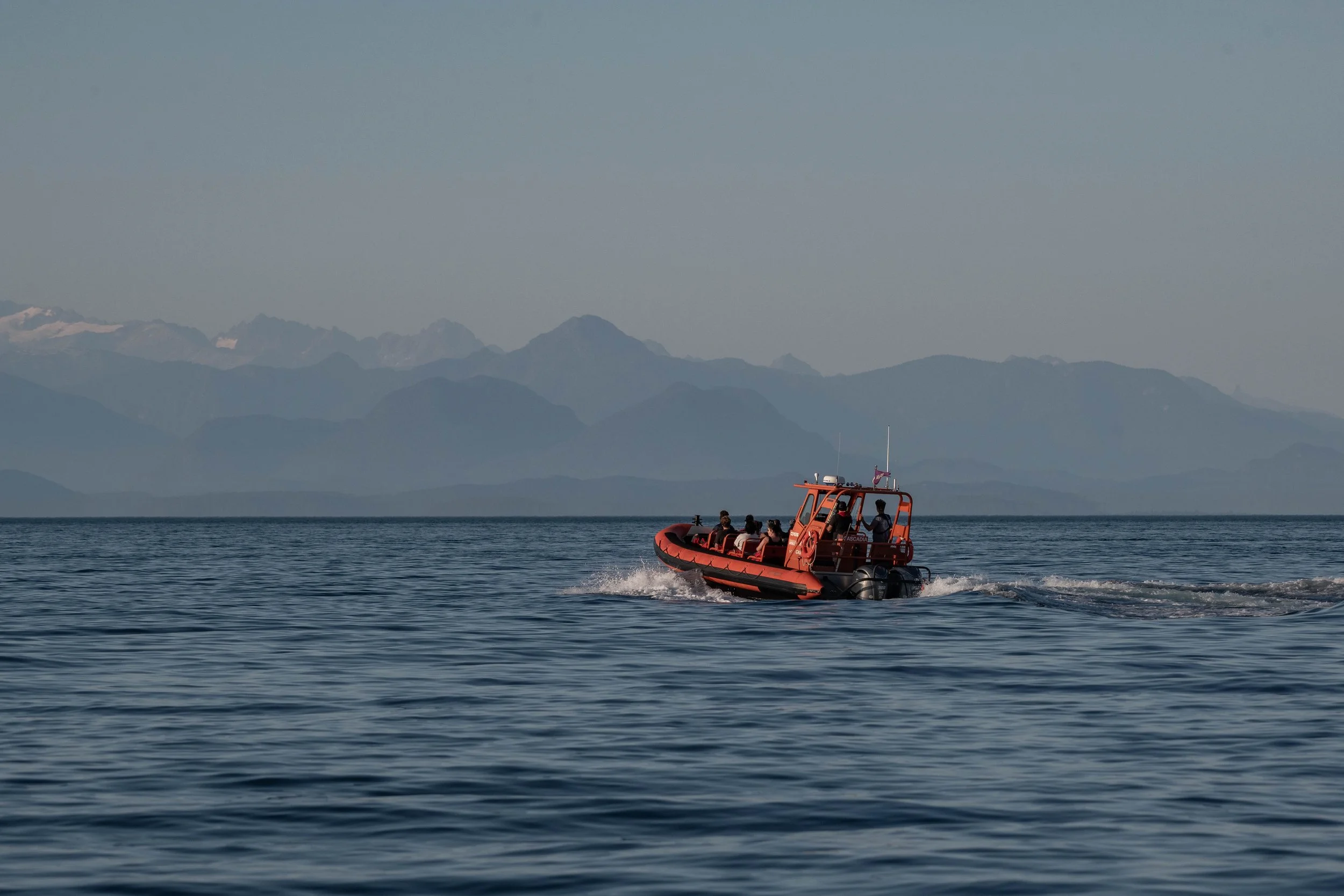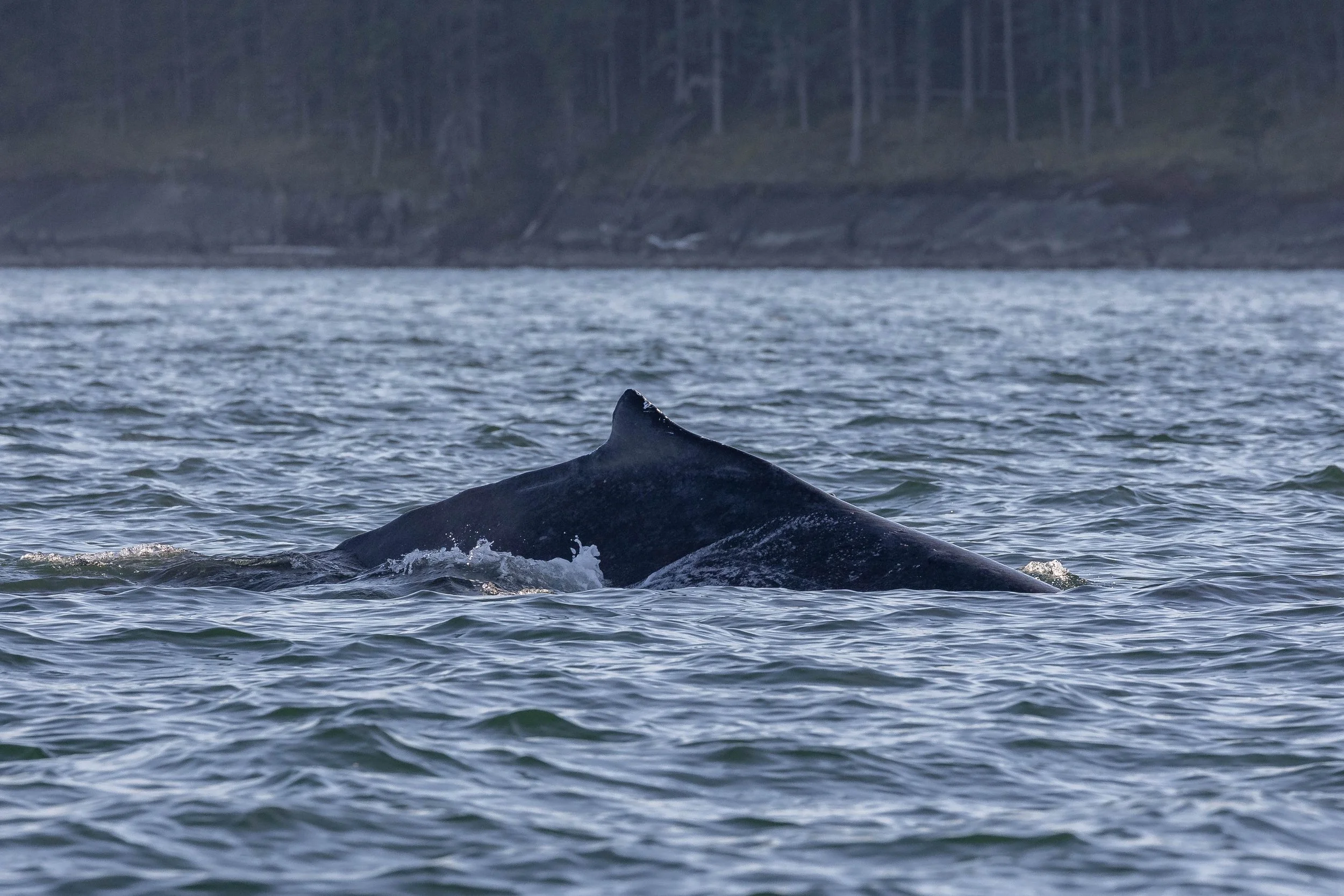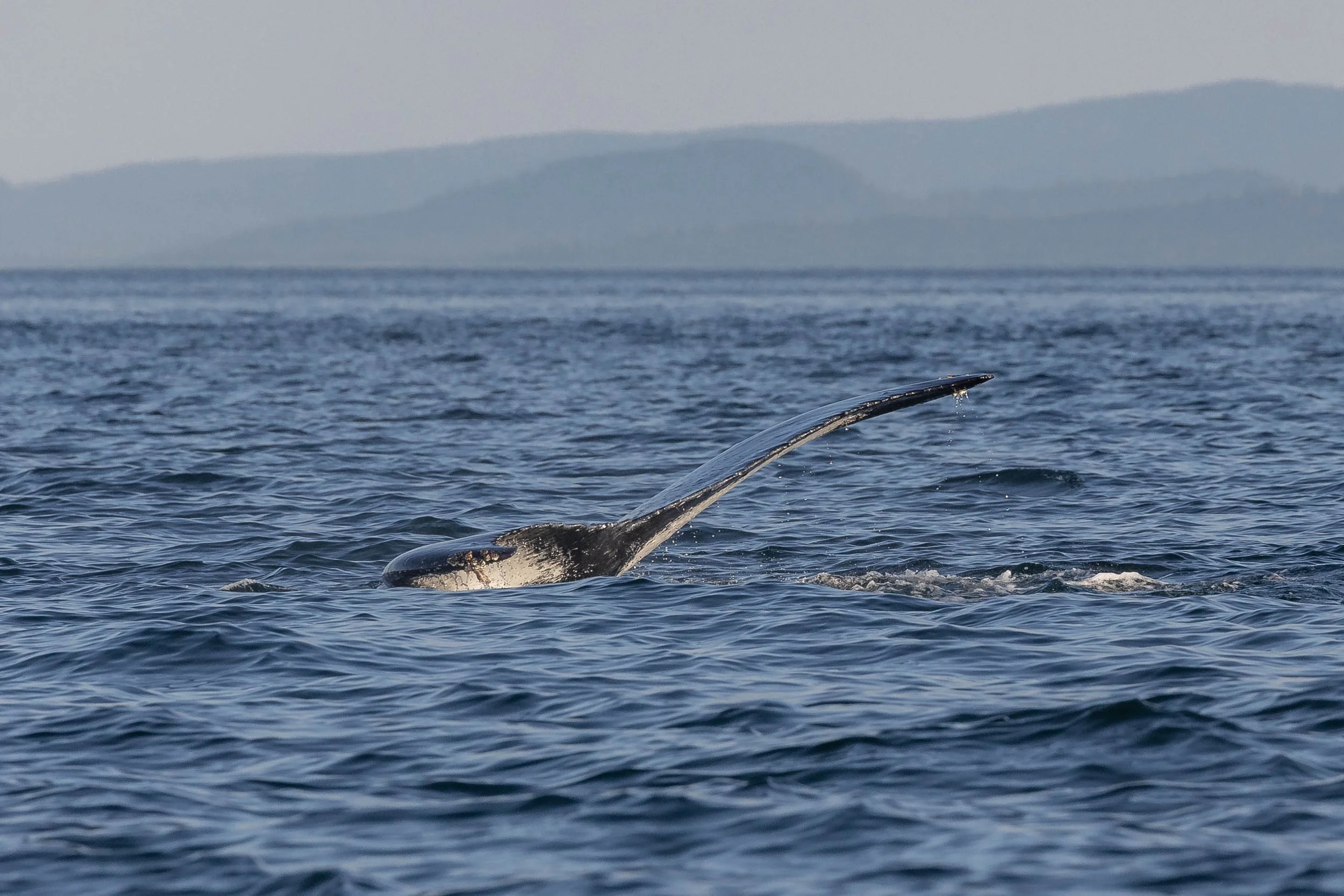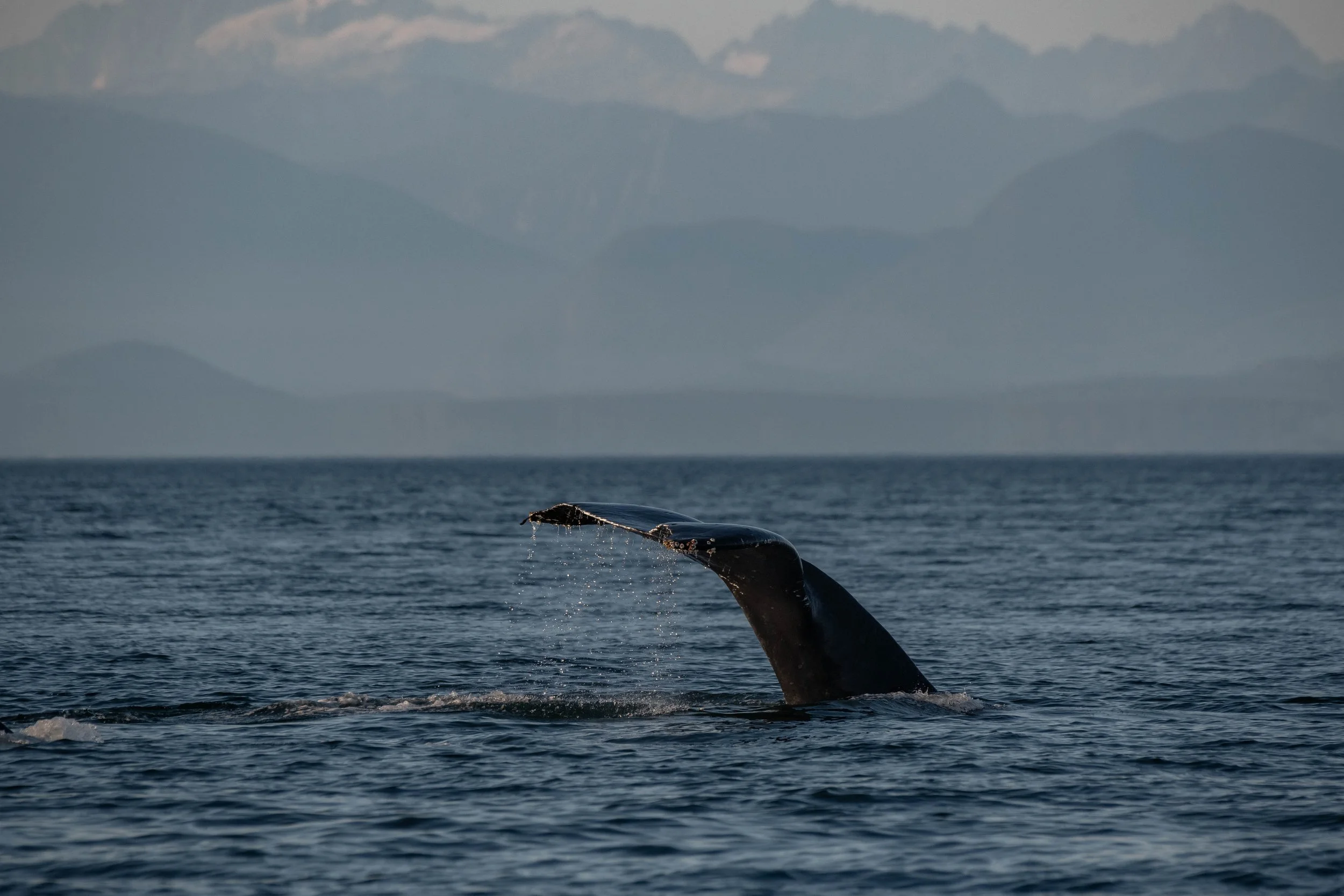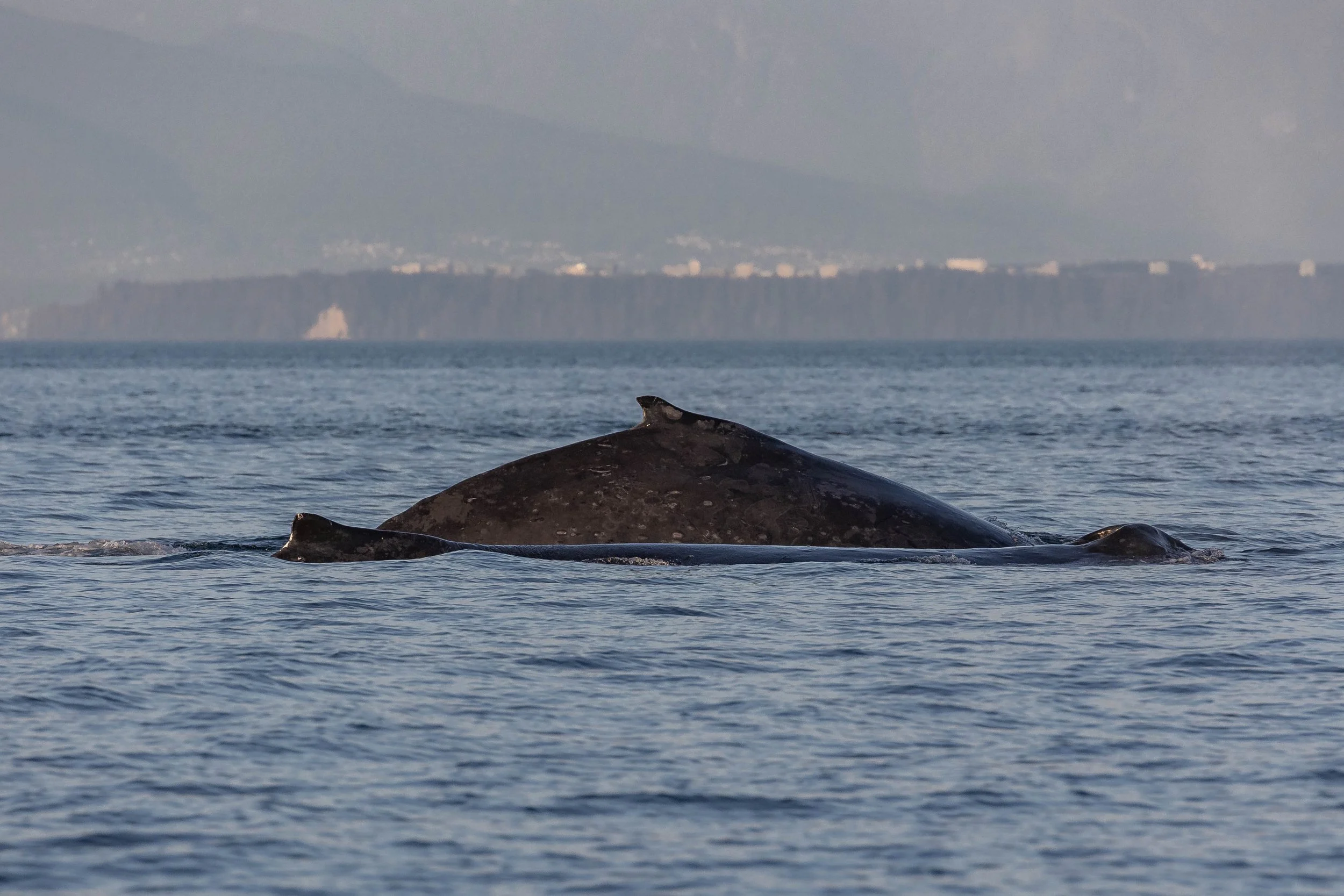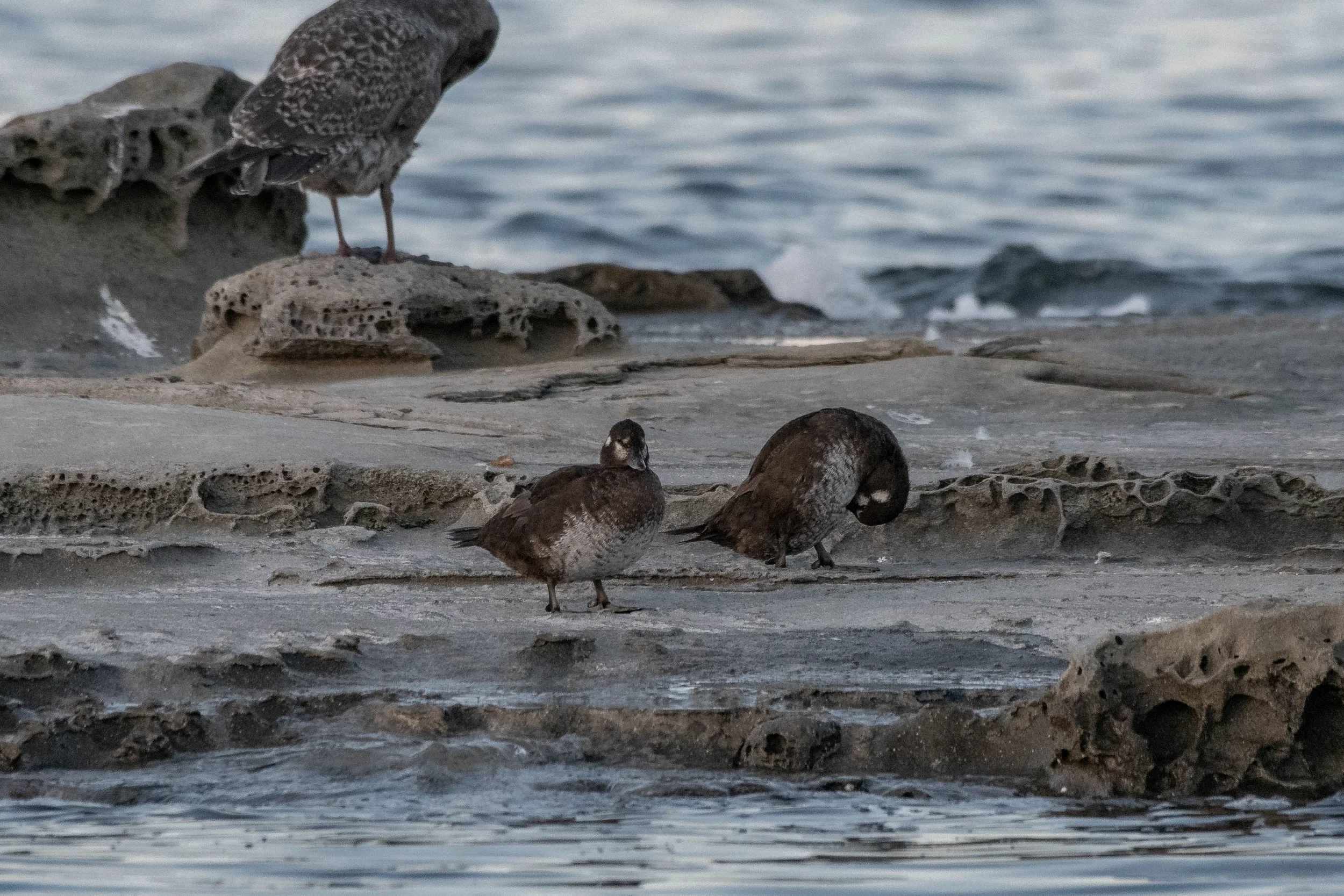September 5, 2024, 3:30 PM - Fast moving Orca and some humpback whales
It’s exciting when we leave the dock for our tours since we never know exactly what we are going to get. Such was the case this afternoon as we had one open boat and the semi-covered vessels leaving Nanaimo in search of whales. The plan was to try and find the group of whales that we had watched in the morning, since they were slowly moving south and we thought we had a good chance of coming across them again. And we did! We found them quite easily, as their behavior had changed quite a bit from the morning. Where they were moving quite slowly before there now seemed to be a sense of urgency, with them porposing through the water and doing all sorts of surface activity. Luckily, with some photos to confirm their IDs, we got to enjoy watching them on a mission. The whales present here today were:
T002C Tasu ♀ (1989)
T002C1 Rocky ♂ (2002)
T002C3 Lucy ♀ (2011)
T002C5 (2020)
T075B Pebbles ♀ (1995)
T075B2 Jasper ♀ (2015)
T075B3 Rubble ♂ (2017)
T075B4 (2021)
While we never learned what lit the fire under these whales to get them moving so fast, it was still exciting to watch. When moving quickly you tend to see a bit (or a lot) more of the whale coming out of the water, leading to some great looks at the otherwise hidden white parts of the animals, like their eye patches and white bellies. Especially when doing huge lunges out of the water with porposing like this, you can see the unique patterns to their bellies. Thought to have two purposes, this white may act to break up their body shape when viewed from below by their prey, or it might flash at other members of their pod during hunts to coordinate their movement without discussion. Although in our waters visibility is quite low, they think even the little bit of white being able to be seen may be important for the orca.
They travelled a fair distance during our time with them, about halfway down Galiano Island. At this point, it was time for us to leave them to it, and we started the search for humpback whales. One boat ended up finding a pair of humpbacks first who seemed to be travelling through the area, while they both lifted their tails a little when they went for their longer dives, we only recognized one of them: Valiant (BCX1773). The other whale that Valiant was with has been giving us a hard time with ID lately, but this is the first time we got a bit of their tail! We will keep pouring over the catalogues trying to match this fluke, but for now it remains a mystery.
We also found a second pair of humpback whales during this tour, but this time we recognized both of them, a little bit easier this time since it was a cow-calf pairing! Zephyr (BCZ0414) and her 2024 calf. Getting to see the mother and baby is always pretty special since they will only travel together like this for the first year of that calf’s life! While Zephyr stayed focused on feeding for the most part, the calf was able to have a little more fun! We saw it rolling around and got a glimpse at the underside of its tail flukes as it tilted it’s tail sideways. Zephyr needs to be more focused on food since she has two current tasks: provide enough food for her calf to nearly double in size in the first year, plus she has to build up her own fat reserves to stay healthy during her migration over the winter. It’s estimated that instead of the typically daily tonne of food that a humpback will eat, lactating or pregnant females have to increase that to 1.5 tonnes. That’s a lot of food! The calf has never known the hunger of going without food during the migration yet thanks to Zephyr’s hard work, but they will be on their own by the end of the year so they are sure to find out!
The final group of humpbacks that we came across today was a group of three: Geometry (BCZ0338), Europa (BCX0854), and Scuba (BCY1225) travelling together! These whales also seemed to be feeding in the area, which makes sense since they will also need so much food consumed over the summer months to prepare for their migration. The big question with groups getting larger like this one is: are they benefiting each other’s feeding by hanging out together? There’s a theory that when the humpbacks are feeding in pairs or trios, they swim closely together with one lunging through the bait ball and the other will swim alongside and eat the spillover. This may be beneficial since the food would be concentrated for the others via the mouth of the first one! Cooperative feeding is well known among humpback whales through bubble-netting, made most famous further north where the whales will work together in large groups, one leading the others through the more complicated method. They release bubbles from their blow hole which acts as a net, trapping their food inside and allowing them to concentrate the food and get more when they lunge up through it. While we don’t have this impressive bubble-netting in our range, there is lots of evidence of smaller-scale cooperation amongst the whales, line bubble-netting in a line instead of a circle.
Although we love to speculate about the reason they travel in groups like this, just seeing three massive whales with their movement coordinated at the surface is really neat.
In addition to the whales today, the tours also made a stop at Stinky Rock to see the Steller Sea Lions and Harbour Seals that spend time there before returning to the harbour. Photos from the day taken by Marine Naturalists Aly Kohlman and Hayleigh Hilbert can be viewed below!
T002C Tasu porposing through the air. Photo by Aly Kohlman.
T002C1 Rocky surfacing in the calm water. Photo by Aly Kohlman.
T075B Pebbles leading another at the surface. Photo by Aly Kohlman.
T002C1 Rocky surfacing in front of Mt. Baker. Photo by Aly Kohlman.
A lovely tail flick. Photo by Aly Kohlman.
T075B4 has a lot of scars on their saddle patch. Photo by Aly Kohlman.
T002C Tasu surfacing. Photo by Aly Kohlman.
T075B4 surfacing in the calm water. Photo by Aly Kohlman.
T002C Tasu (left) surfacing with her son T002C1 Rocky (right). Photo by Aly Kohlman.
T002C1 Rocky showing off his scarred saddle patch. Photo by Hayleigh Hilbert.
T075B4 surfacing. Photo by Hayleigh Hilbert.
T002C1 Rocky is very easy to ID with all these scars! Photo by Hayleigh Hilbert.
T075B4 showing off their eye patch. Photo by Hayleigh Hilbert.
T002C Tasu has two notches at the base of her dorsal fin. Photo by Hayleigh Hilbert.
Tail flick! Photo by Hayleigh Hilbert.
Group Photo! From left to right: Tip of T002C1 Rocky's dorsal fin, T075B Pebbles, T002C Tasu, T075B4, and T002C3 Lucy. Photo by Hayleigh Hilbert.
T002C1 Rocky, T075B Pebbles, T002C Tasu, T002C5, and T002C3 Lucy. Photo by Hayleigh Hilbert.
Our Mystery humpback making a fluke waterfall. Photo by Aly Kohlman.
Hopefully we can use this photo of the mystery humpback's tail to ID them! Photo by Aly Kohlman.
Cascadia sailing away with the coastal mountains behind her. Photo by Aly Kohlman.
Zephyr's dorsal fin. Photo by Hayleigh Hilbert.
Zephyr's calf. Photo by Hayleigh Hilbert.
One side of Zephyr's calf's tail. Photo by Hayleigh Hilbert.
The underside of Zephyr's tail. Photo by Hayleigh Hilbert.
Europa's tail flukes. Photo by Aly Kohlman.
Scuba lifting his tail to dive, with Geometry in the background. Photo by Aly Kohlman.
Europa diving. Photo by Aly Kohlman.
The underside of Scuba's tail. Photo by Hayleigh Hilbert.
Scuba in behind and Geometry in front. Photo by Hayleigh Hilbert.
Geometry creating a fluke waterfall. Photo by Hayleigh Hilbert.
Steller Sea Lions playing in the water. Photo by Hayleigh Hilbert.
Some Surf Birds and Black turnstones on Stinky Rocks. Photo by Aly Kohlman.
Female Harlequin Ducks hanging out as well. Photo by Aly Kohlman.
Some hauled out Harbour Seals. Photo by Aly Kohlman.

